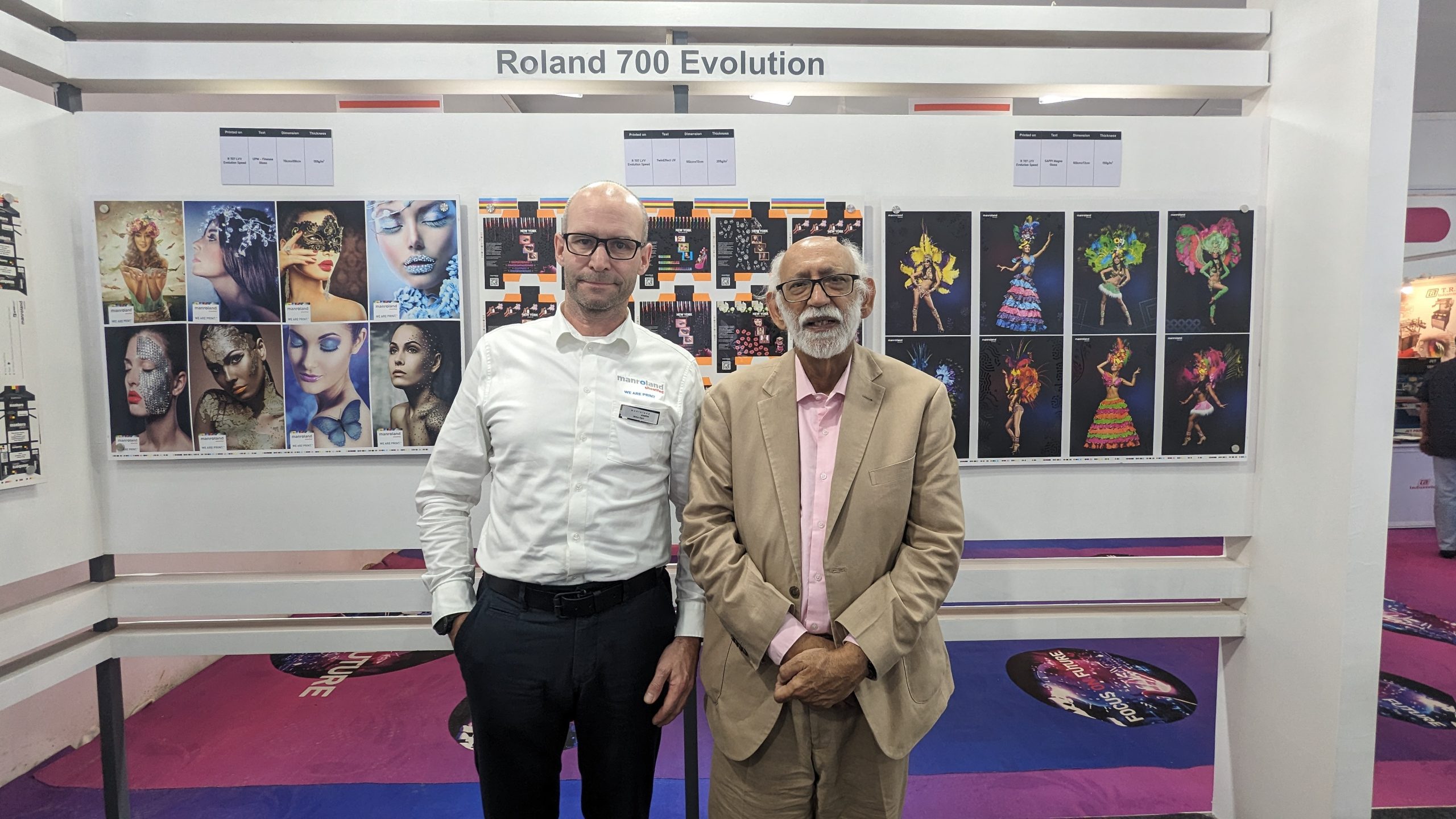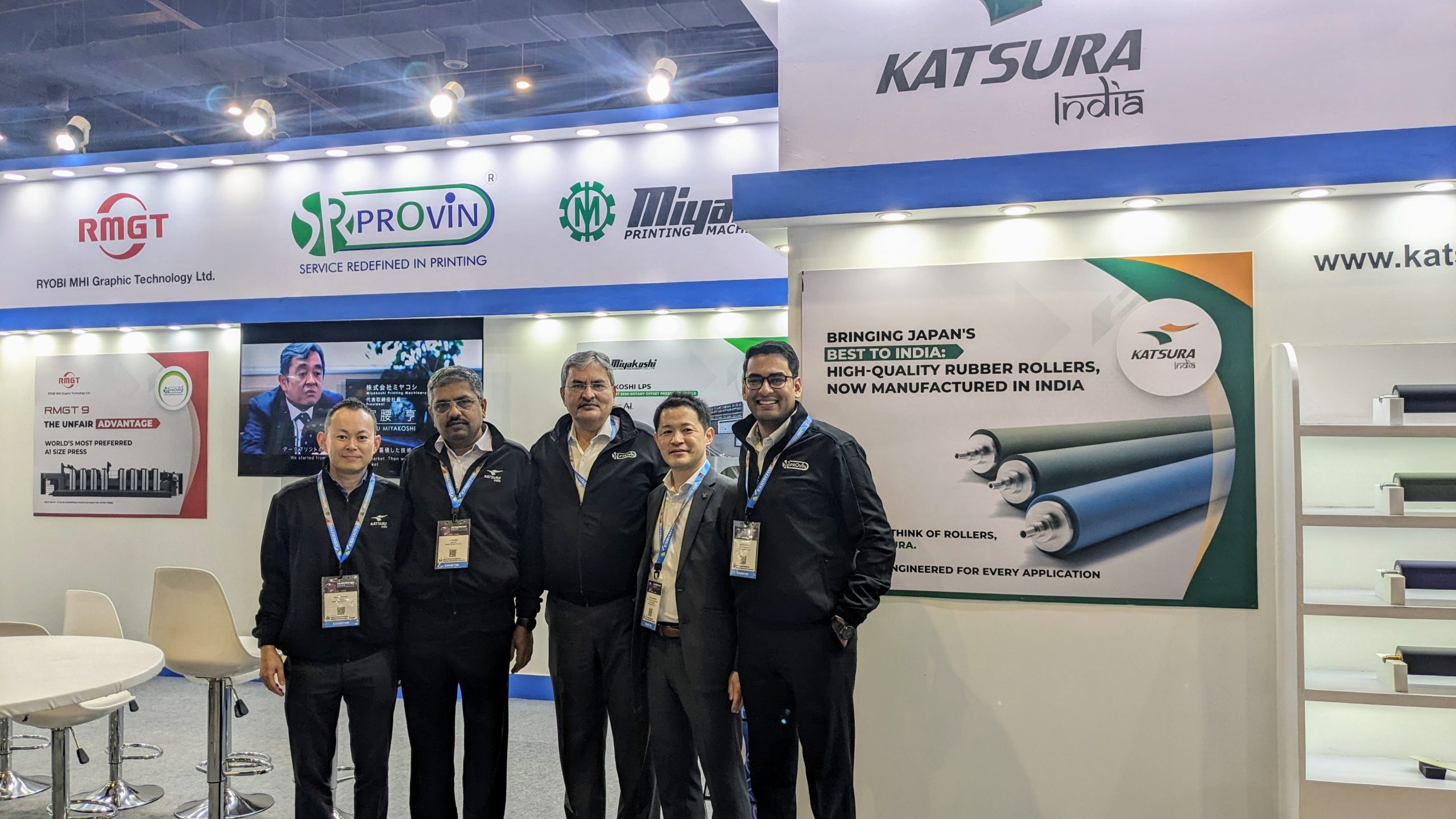The Printpack exhibition in Greater Noida across the river from Delhi and 30 kilometers southwards in the direction of the Taj Mahal is shining, as it comes into its last two days. It is well organized and of an exceptional standard. Although it is spread out with several large temporary structures, overall it is welcoming visitors with wide aisles, good lighting, circulation of air, and many of the facilities that make visitors feel that the country and the industry are arriving. I believe it gives confidence to each of us that we can collectively achieve something of quality for each other and it inspires us to work harder.
We have talked to the CEOs of Manroland Sheetfed and Ricoh and each sees growth in the Indian print and packaging industry – and that investments and strategy for this market require a perspective of five to eight years. In the case of Manroland Sheetfed which has regained traction in India, it is committing to resources for not merely capturing a section of the market but for becoming a significant player in both the commercial and carton sheetfed multicolor offset segments. Heidelberg is showing a running multicolor press, which demonstrates the reallocation of its marketing budget for this region borne out of its drupa24 sales successes.

The offset press installations in this financial year for the Indian print and packaging industry will probably be between 85 and 90 machines with a good number of long presses beyond the now usual 7-color coater for packaging, and a record number of 8-color perfectors for book printers and exporters. Komori is the overwhelming leader now in the number of machines in both the commercial and packaging markets. In value terms, there is a tough fight between Heidelberg and K&B in carton presses although Komori is the leader in the number of both commercial and packaging presses. Taking both commercial and carton presses, Heidelberg is the leader among German manufacturers. All five major offset press manufacturers will install multicolor presses in the Indian market in the financial year ending 31 March 2025.

The leading manufacturers of label presses, digital presses, and binding equipment are demonstrating technology innovations that make them viable export partners for the rest of the world where they have already made a dent in the past ten years. Multitec, Monotech, and Bindwel are taking on both the European and Chinese manufacturers with new technologies. Multitec has already shown its running presses at Brussels and is working on something that will likely impact Barcelona. Monotech is fighting the Chinese webfed inkjet players and showing a completely Indian-manufactured line that can digitally print and finish book blocks, inline.
The Bindwel stand at the show exudes a mastery of metallurgy and mechanical engineering dedicated to book-binding applications for short runs, complex mid-size runs, and long runs. The short-run or book-of–one equipment will be demonstrated later this month at the Hunkeler InnovationDays in Lucerne, Switzerland. It is heartening to learn that nine out of ten leading Indian book manufacturers have finally abandoned their love affairs with used European equipment and have gone in for the high-production Bindwel book production lines.

The breakthrough announcement by Provin Technos and Katsura at Printpack of their joint venture for producing rubber rollers in Faridabad near Delhi is also a sign of the growing maturity of both the demand side and consumable manufacturing. The large presence of the Katsura team shows their interest in listening to their customers and their interest in establishing a world-class project, that acknowledges the inputs from our research organization, IppStar (www.ippstar.org). It is always heartening when a research and consulting project by our team leads to investment, action and implementation.
Competitiveness is in the air
While there is a sense of peace and calm at Noida that inspires confidence, as do the printers and converters who are buying as much as they can absorb as they continuously run out of industrial space, competition is also very much in the air. There is a highly competitive situation amongst both the buyers and the sellers of equipment. Whether one can hope for a healthy and sustainable competition is unclear, but the exhibition is a physical barometer with small, medium, and large visitors and exhibitors all vying with each other with innovative products that promise new levels of quality and efficiencies.
The stories from both sides are increasingly convincing – that the issues in India are neither of demand, nor capital but for more highly skilled human resources. This is why equipment and technologies that offer precision and efficiencies with automation and reliability backed by reasonably priced spare parts and highly skilled engineering services, are not really expensive. Moreover, both the global and Indian manufacturers are facing the same tough fight as their customers – for viable margins.
Note – This article has been slightly edited on 6 February 2025 by the author.










